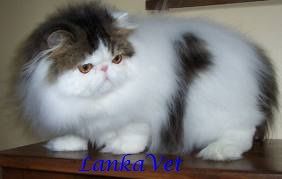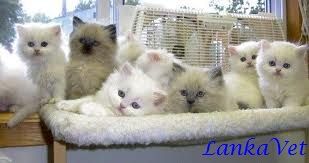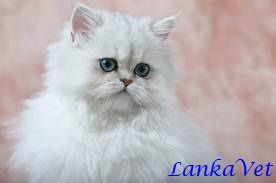The modern Brachycephalic Persian cat has a large rounded
skull and a shortened face and nose. This facial conformation makes the breed
prone to breathing difficulties, skin and eye problems and birthing
difficulties
Polycystic Kidney Disease
PKD affects the 36%-49% of adult Persian cats and causes
kidney failure. Symptoms include excessive drinking and urination, reduced
appetite, weight loss and depression.
Hypertrophic Cardio-myopathy - Faster Heart Rate
HCM is a heart disease that affects young to middle aged
cats. It is characterized by a faster heart rate and congestion sounds in the
lungs. The pulse also feels weak. The most symptom of HCM is pain, associated
with blood clot formation in the aorta. HCM is treated with diuretics, such as
frusemide, diltiazem, and nitroglycerine ointment. ACE inhibitors, can be
beneficial, while some cats respond to essential fatty acid supplements and the
antioxidants selenium and vitamin E.
Epiphora - Excessive
Tearing
Epiphora is an abnormal overflow of tears down the face
that results from either obstruction of tear drainage through the tear duct
system or overproduction of tears that overwhelms the normal drainage system.
The cause of this excessive tearing may be due to chronic
eye irritations or infections. The case can be treated with the use of
antibiotics such as Tetracycline.
Feline Hyperesthesia - Sensitive Skin
Hyperesthesia means abnormal and extremely sensitive skin. It’s
a condition in which the skin on a cat’s back ripples from the shoulders all
the way to the tail. Stress is the cause
for Feline Hyperesthesia, which is a case similar to Psychogenic Alopecia. The
treatment for feline hyperesthesia syndrome involves reducing stress on the cat
using antidepressants or by simply separating the cat from its stressful environment.
Enriching the cat's environment with toys, climbing equipment and providing a
room with a view, may also help to relieve from this condition.




No comments:
Post a Comment